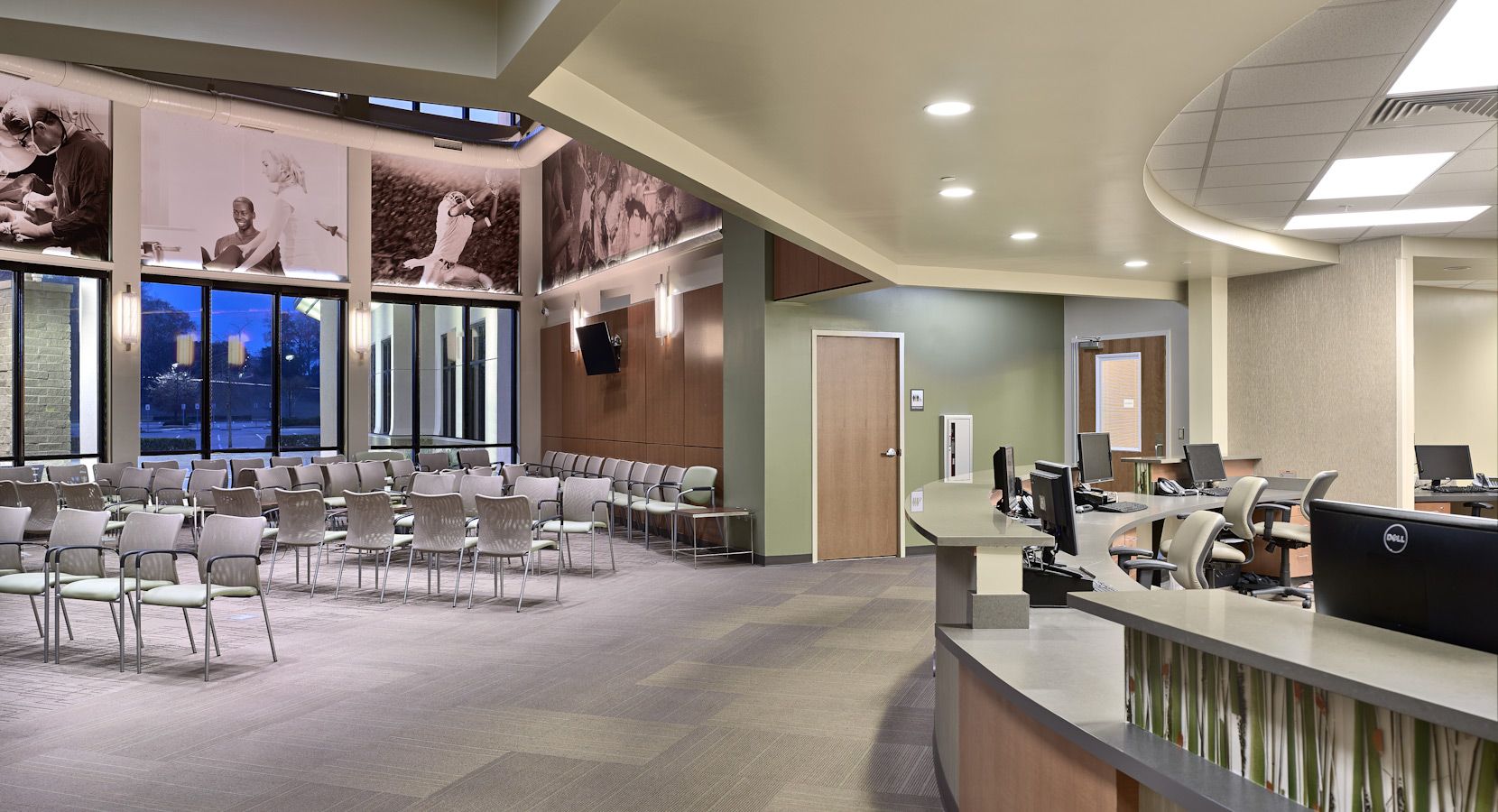
Maximising the lifespan of commercial interiors requires more than attractive design; it demands consistent upkeep and smart preventative measures that protect your investment. By focusing on areas prone to wear, maintaining regular cleaning routines, and prioritising quality, you create a functional, welcoming space that reflects your brand’s commitment to long-term value and durability.
The Foundations of Long-Lasting Commercial Interiors
Creating enduring commercial spaces requires a focus on durable materials, timeless design, and effective space planning. By incorporating these elements, you can minimise maintenance and ensure the longevity of your interiors.
Choosing Durable Materials
Selecting durable materials is essential for extending the life of commercial interiors. Stone, metal, and engineered wood offer resilience and longevity. Stone countertops resist scratches and heat, while stainless-steel fixtures are strong and low-maintenance. Engineered wood provides a natural look with durability for heavy foot traffic.
Prioritise materials that can endure the wear and tear of daily operations. You can also consider using protective finishes and treatments to enhance resistance to spills, stains, and abrasions. Don’t forget to look at the manufacturer’s warranty, as it often indicates the expected lifespan of the product.
Prioritising Quality Over Trends
Choosing quality over short-lived trends creates a timeless look and avoids costly updates. Opting for classic styles and durable construction helps maintain long-term appeal.
Investing in quality seating and tables made from robust materials can prevent frequent replacements. Focus on craftsmanship and trusted brands to ensure lasting durability. Quality doesn’t mean boring; choose pieces with clean lines and neutral colours that can easily adapt to different styles over time, giving your interior a versatile look that remains appealing.
Strategic Space Planning
Effective space planning supports functionality and adaptability. Use flexible elements such as modular furniture to adjust layouts as needs change.
Consider the flow of traffic and allocate areas for specific tasks to streamline operations. Ample storage helps keep the workspace organised and efficient. Think about natural lighting; large windows can reduce energy costs while enhancing the interior’s ambience.
Strategic planning is not just about current needs but also about anticipating future requirements. By doing so, your space remains functional and appealing as your business evolves.
Smart Preventive Maintenance Strategies
To keep commercial interiors looking their best and lasting longer, it’s essential to implement smart preventative strategies. These include regular cleaning routines, timely inspections, and safeguarding areas prone to wear. Addressing these elements can help avoid costly repairs and maintain an inviting atmosphere.
Proactive Cleaning and Care Routines
Regular cleaning isn’t just about appearance; it’s about preservation. By establishing frequent cleaning schedules for carpets, upholstery, and surfaces, you help prevent dirt accumulation that can lead to wear and tear.
Daily and Weekly Goals:
- Daily: Dust surfaces and mop high-traffic floors.
- Weekly: Vacuum carpets and wipe down glass.
Consider environmentally friendly cleaning products to reduce potential damage and avoid harsh chemicals. Periodically, professional deep cleaning services can refresh and renew spaces, extending the lifespan of furnishings and fixtures.
Scheduled Inspections and Repairs
Regular inspections are crucial in identifying potential issues before they become significant problems. Arrange twice-yearly walkthroughs to check for damage in areas like electrical systems, plumbing, and structural components.
Inspection Checklist:
- Electrical outlets and switches
- Plumbing lines and fixtures
- Walls, ceilings, and flooring
Should you find any damage or wear, address repairs promptly, and bring in a commercial damp control specialist if moisture or damp-related concerns are detected. This proactive approach not only extends the life of interiors but also ensures safety and compliance with regulations. Keep a detailed maintenance log to track repair history and facilitate future inspections.
Protecting High-Traffic Areas
High-traffic areas endure more wear and need protective measures to retain their condition. Use durable materials such as commercial-grade carpets or hard surfaces like tile or vinyl, which resist wear better. Brands like Land of Rugs also offer robust flooring options suitable for commercial environments where durability is essential.
Consider the following protective strategies:
- Install entry mats to reduce dirt ingress.
- Apply protective coatings on surfaces prone to scratching.
- Use barriers or partitions to redirect foot traffic.
Regularly update these measures as needed, adapting them to changing patterns and maintaining the appearance and functionality of these vital spaces. Effective protection helps in managing maintenance costs and prolonging the space’s aesthetic appeal.
Embracing Innovations for Longevity
To extend the lifespan of commercial interiors, embracing innovations is essential. By integrating wear-resistant technologies, adapting to evolving sustainability standards, and utilising smart monitoring systems, you can ensure durability and efficiency in your environment.
Integrating Wear-Resistant Technologies
When it comes to maintaining a fresh look for your interiors, wear-resistant technologies are essential. Innovations like stain-resistant coatings and durable materials can significantly reduce wear and tear. These solutions offer protection against everyday damage, enabling facilities to maintain their appearance over time.
Consider high-performance surfaces such as vinyl flooring that can withstand heavy foot traffic. This type of flooring is easy to clean and can last longer than traditional options. Using UV-resistant finishes in areas exposed to direct sunlight can prevent fading and keep colour vibrant. You’ll also find advancements in abrasion-resistant fabrics that help furniture maintain its look.
Adapting to Evolving Sustainability Standards
Sustainability is more than a trend; it’s a necessity. Updating interiors to align with sustainability standards can enhance longevity and reduce environmental impact. Start by choosing materials with a lower carbon footprint. Products certified with labels like FSC or Cradle to Cradle ensure responsible sourcing and production processes.
Implement options like energy-efficient lighting and thermal insulation. These not only reduce utility costs but also extend the life of your systems. Opt for modular components that can be easily replaced or upgraded without a significant overhaul. This adaptability can improve the sustainability of your space and increase its lifespan.
Utilising Smart Monitoring Systems
Smart monitoring systems offer a proactive approach to maintaining your interiors. They enable you to track usage patterns, environmental conditions, and equipment health. With IoT sensors, you can swiftly address potential issues before they escalate into costly repairs.
Set up automated alerts to stay informed about changes in air quality or lighting levels. This can enhance comfort for occupants and reduce strain on systems. Regularly analysing the data collected by these systems can lead to more informed decisions about maintenance schedules and improvements. Embracing technology ensures your commercial interiors remain efficient and less prone to unexpected failures.
Empowering People to Preserve Interiors
Creating a sustainable and well-maintained commercial interior requires a communal effort. Engaging individuals with the right knowledge and mindset to maintain their surroundings is key. These strategies foster responsibility and awareness, ensuring longevity and functionality in these spaces.
Fostering a Culture of Care Among Staff
It’s crucial to nurture a sense of ownership and responsibility among staff members. When employees feel aligned with the values of care and maintenance, they become proactive guardians of their environment.
Start by integrating maintenance practices into their daily routines. Simple actions, such as keeping workspaces tidy or reporting necessary repairs promptly, make a significant difference. Providing rewards or recognition for those who excel in maintaining their areas can motivate others.
Encouragement through training sessions, emphasising the importance of upkeep, ensures everyone understands their role. As staff feel appreciated for their efforts, they become more invested, reducing wear and tear on interior spaces significantly.
Educating Occupants on Best Practices
Educating occupants on best practices helps minimise damage and maintain interior quality. Ensure clear guidelines are accessible and easy to follow.
Consider workshops or seminars where occupants learn about the impact of their actions on the environment. Visual reminders, like posters or digital screens, reinforce these messages consistently. Initiatives could include demonstrations on cleaning techniques or information sessions on proper equipment use.
Encouraging open communication allows for a continuous exchange of ideas and feedback. By understanding the effects of simple actions, occupants contribute positively, ensuring the integrity and appeal of the interiors.
Conclusion
By combining durable materials, smart planning, consistent maintenance, and a culture of shared responsibility, businesses can significantly extend the lifespan of their commercial interiors. With proactive strategies and modern innovations in place, organisations can protect their investment, reduce long-term costs, and maintain spaces that remain functional, attractive, and welcoming for years to come.





